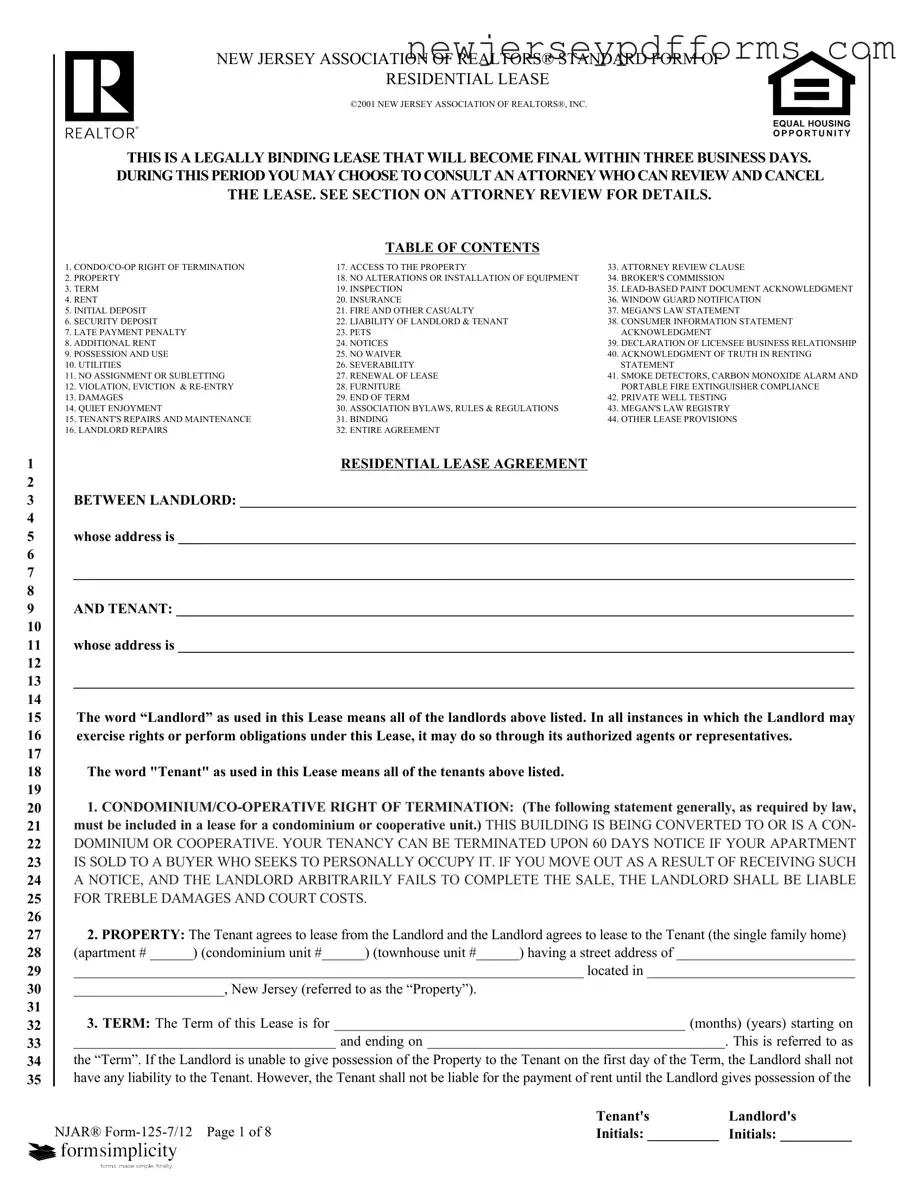1. What is the Njar 125 7 12 form?
The Njar 125 7 12 form is a standard residential lease agreement used in New Jersey. It outlines the terms and conditions of renting a property, including responsibilities for both the landlord and tenant. This legally binding document ensures that both parties understand their rights and obligations during the lease term.
2. How long is the lease term specified in the form?
The lease term can vary based on the agreement between the landlord and tenant. It is specified within the form, allowing for flexibility in duration, whether it be months or years. The start and end dates of the lease are also clearly defined to avoid any confusion.
3. What is the purpose of the security deposit?
The security deposit is collected to ensure that the tenant fulfills their obligations under the lease. It typically cannot exceed one and a half months' rent. The landlord is required to deposit this amount in a New Jersey banking institution and must inform the tenant about the account details. This deposit can be used to cover any damages or unpaid rent when the tenant vacates the property.
4. What happens if the tenant fails to pay rent on time?
If the tenant does not pay rent by the specified due date, a late payment penalty will apply. This charge will be added to the rent and treated as additional rent. Furthermore, if a rent check bounces due to insufficient funds, the tenant may incur a processing charge and may be required to pay future rent in cash or certified check.
5. Can the tenant make alterations to the property?
Tenants are not allowed to make any alterations or changes to the property without obtaining written consent from the landlord. This includes installing fixtures or making structural changes. Any unauthorized changes may need to be removed at the landlord's request.
6. What is the attorney review clause?
The attorney review clause allows either party to have an attorney review the lease within three business days after signing. If the attorney disapproves of the lease, they must notify the other party, and the lease will not be binding. This clause provides an opportunity for legal consultation before the lease becomes final.
7. What responsibilities does the tenant have regarding utilities?
The tenant is responsible for transferring utilities into their name before moving in and paying for services such as gas, electricity, and water. The landlord will cover specific utilities as outlined in the lease. Tenants should avoid wasting any utilities to prevent unnecessary costs.
8. Are pets allowed in the property?
Pets are generally not allowed without prior written consent from the landlord. The landlord has the discretion to approve or deny any request for pets, ensuring that the property remains suitable for all tenants.
9. What should the tenant do at the end of the lease term?
At the end of the lease term, the tenant must leave the property clean, remove all personal belongings, and repair any damages incurred during their stay. They should also arrange for final utility readings and return all keys to the landlord. The property should be in the same condition as when the tenant moved in, except for normal wear and tear.
